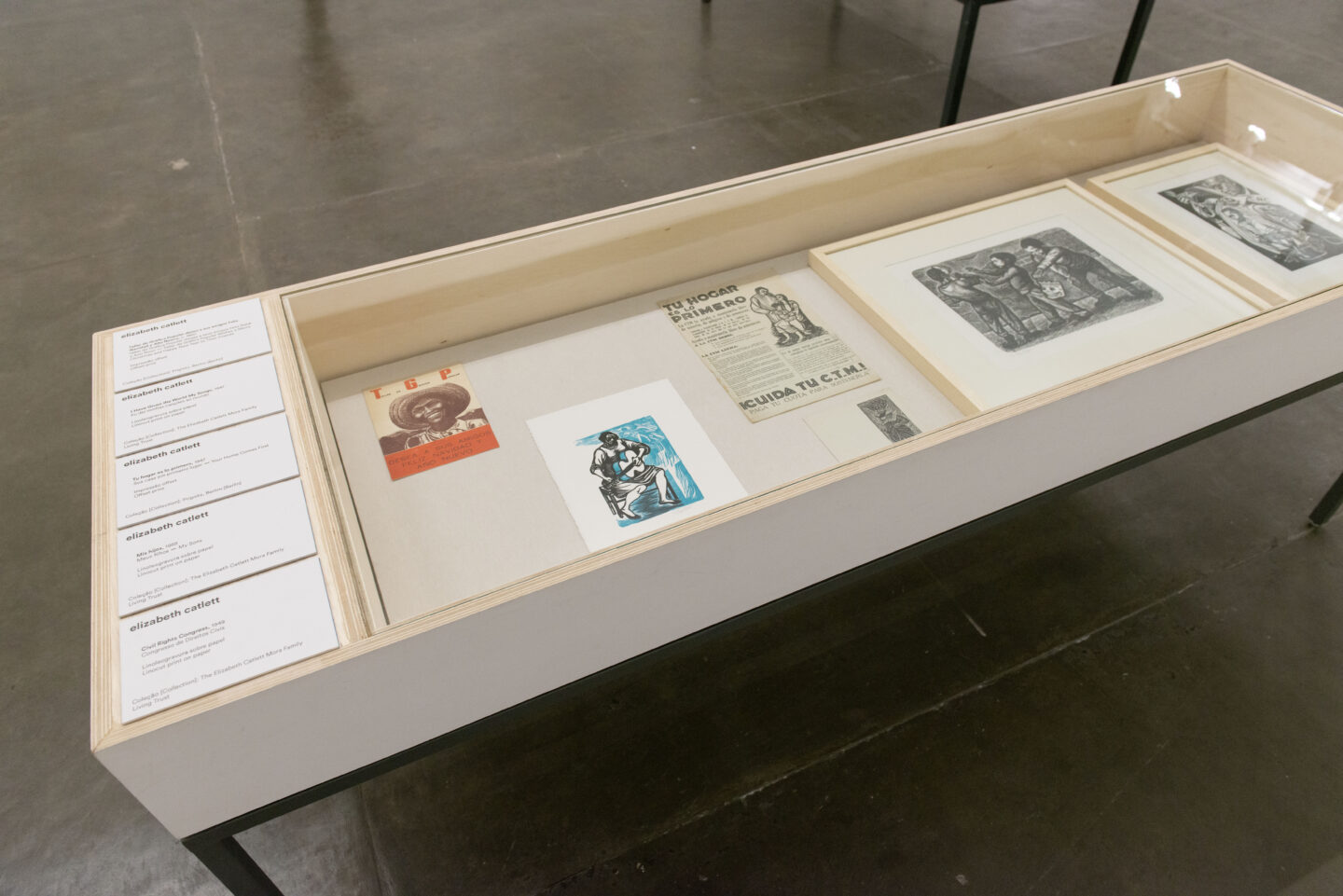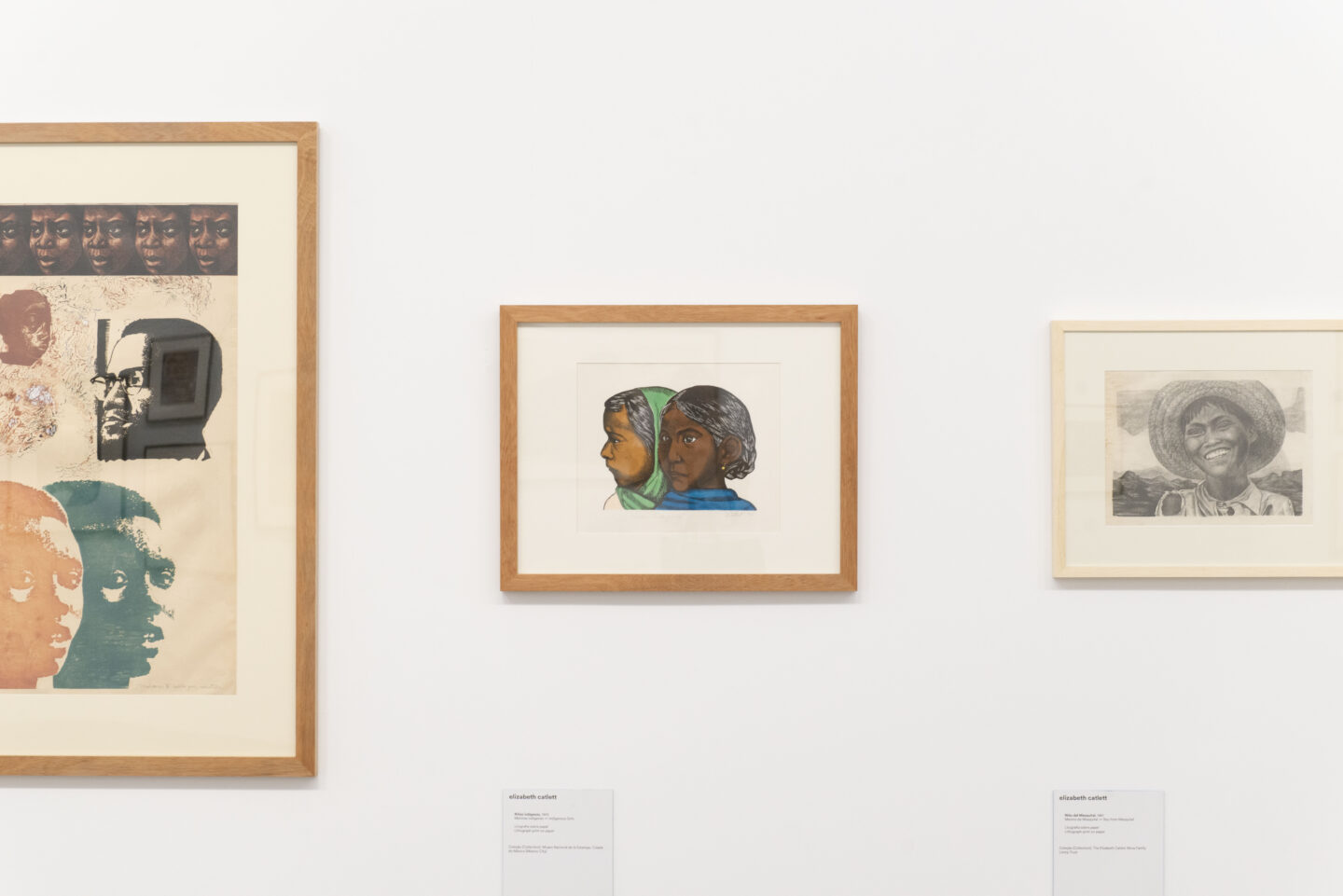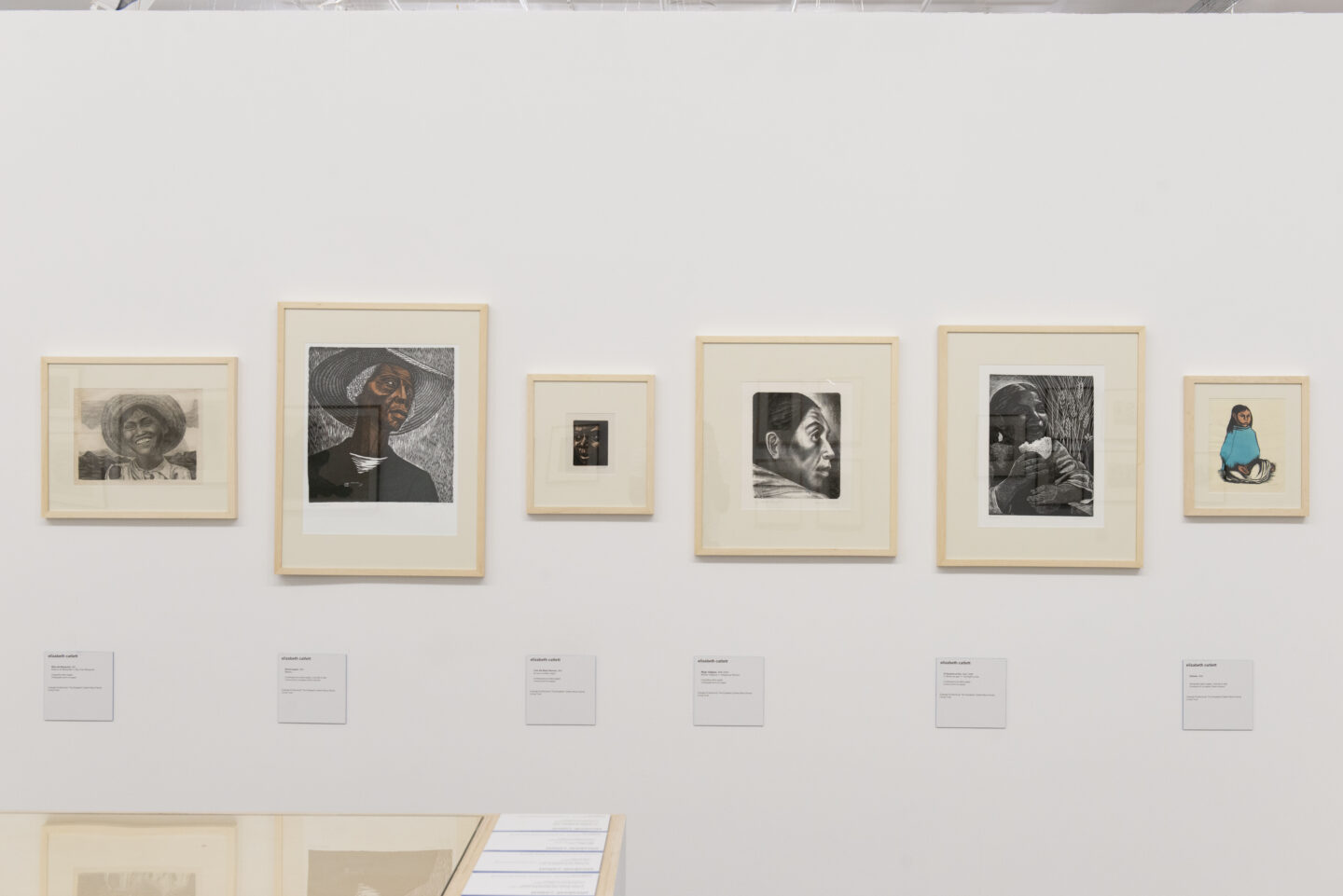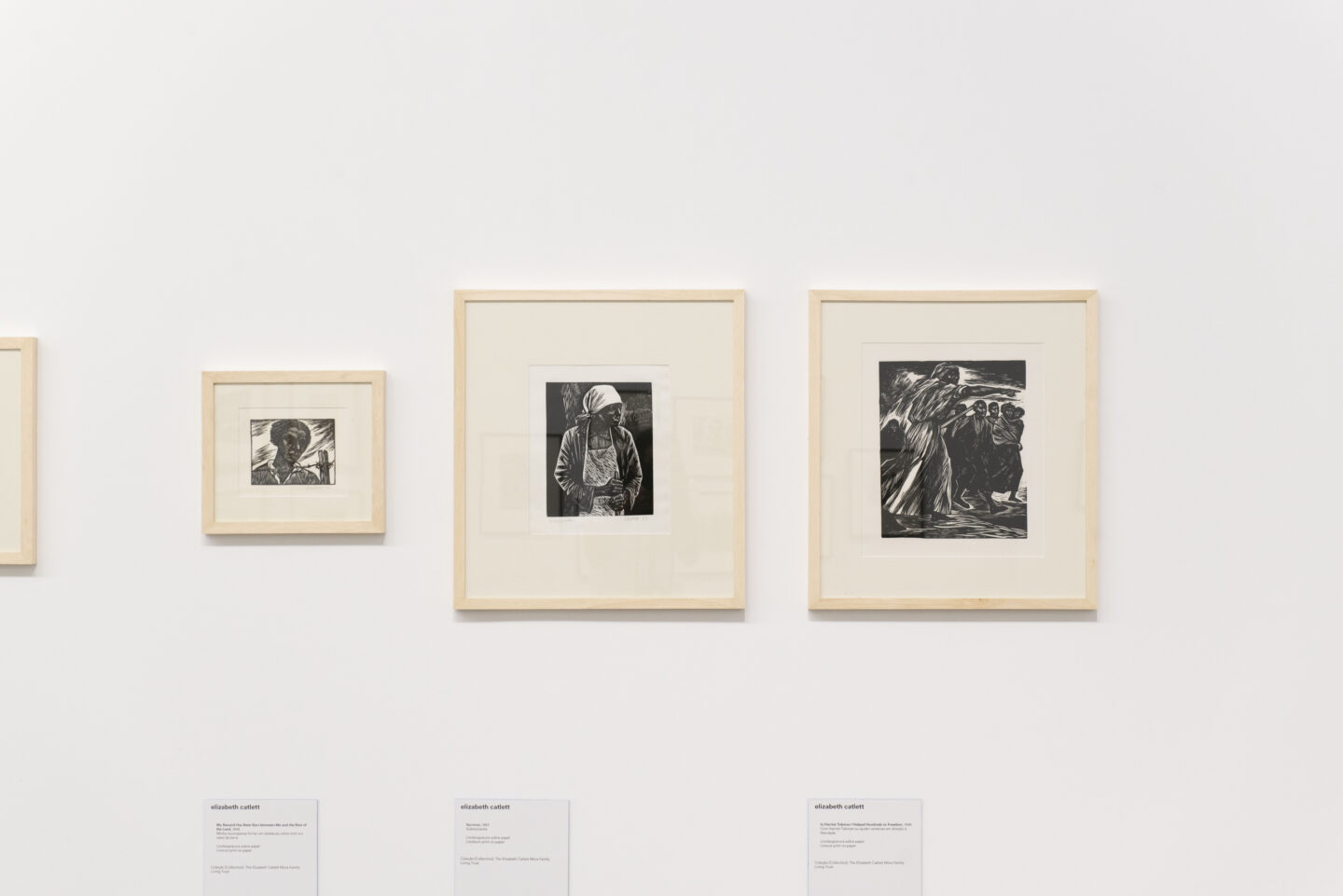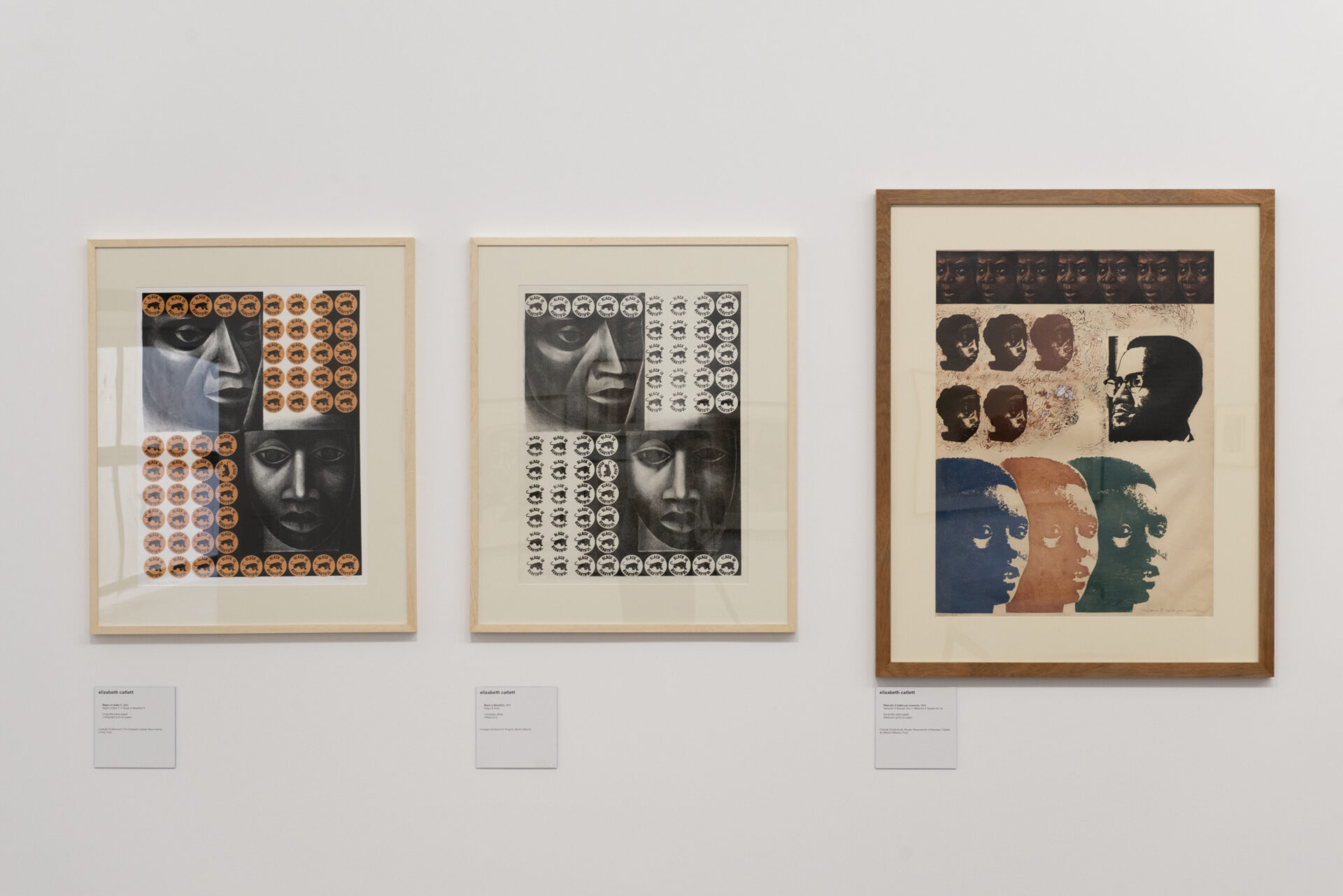
Elizabeth Catlett
“I am black, a woman, a sculptor, and a printmaker. I am also married, the mother of three sons, and the grandmother of five little girls (now seven girls and one boy) […] all of these states of being have influenced my work and made it what you see today.”
– elizabeth catlett
Collaborative processes have a rich tradition in Mexico, and one of the initiatives whose imprint is widespread is that of the Taller de Gráfica Popular (People’s Graphic Workshop), better known as the TGP, which dates back to 1937. Several of the founding members came from another group called the Liga de Escritores y Artistas Revolucionarios (League of Revolutionary Writers and Artists). Reverberating precepts promoted by Muralism, they continued to encourage visual production committed to struggles and social justice, denouncing situations in which peasants and workers lived, and especially resisting and questioning messages, effects or practices linked to prevailing fascism.
The TGP’s graphics – in the spirit of agitation and propaganda – also circulated through posters, flyers, and calendars, appealed to a visual militancy and also to a critique of production models focused on the individual artist.
The TGP promoted instead organizational resources of a collective nature through meetings and assemblies, as can be seen in the photographs. In them they discussed what to represent, how to form the group of volunteers who would produce the image, taking care that the agent in charge was recognized, and at the same time, the collective exercise through the TGP’s distinctive seal/logo.
In March 1938 the TGP approved a document which contained its interests and objectives, a kind of manifesto or statement in which they agreed to work in lithography, metal and wood printmaking and linoleum.
This workshop is created in order to stimulate the production graph in order to benefit the interests of the people of Mexico, and for that objective is proposed to bring together the largest number of artists through the method of collective production.
Although this document was not published, years later, in March 1945, they published their
Declaration of Principles in which they reaffirmed themselves as a center of collective work for functional promotion, as well as their vision of art at the service of the people, so that their production should reflect the social realities of their time.
Like other collective strategies over time, the TGP had various moments of cohesion and internal tension, its participants varied in number and geographical origin at different times. Among its members were artists such as Leopoldo Méndez, Pablo O’Higgins, Luis Arenal and Adolfo Mexiac, also had an important participation of women artists such as Mariana Yampolski, Rini Templeton, Elizabeth Catlett and Margaret Taylor, whose work, in the context of the new feminisms and the depatriarchalizing of history, is being revalued and situated.
Given the great artistic performance and the profuse political activity of the TGP, various foreign artists (mainly American) temporarily joined the workshop to contribute their work to the production of socio-political prints; these artists were called guest artists and some of them were: John Wilson, Hannes Meyer, Lena Bergner, Charles White, Eleanor Coen, Margaret Taylor Goss Burroughs, Rini Templeton, Elizabeth Catlett, among others. These links consolidated the international character of the TGP and in a way stimulated the development of other related projects such as Workshops of Graphic Art in Los Angeles, San Francisco, and New York.
The production of Elizabeth Catlett is distinguished by the determined and politicized visual representation of working women and other agents who challenged racism and the violence imposed on communities that have suffered violence, principally African-American and Indigenousindigenous people. By 1946 Catlett won a Julius Rosenwald Fund grant and began work on a series inspired by the working women of the Carver School, with which she was able to travel to Mexico accompanied by Charles White. Catlett stated that from the TGP she developed “a new understanding of how she wanted to work as an artist and what exactly it was that she wanted to fight for” by attending to a work for the Mexican people rather than framing it in gallery or museum circuits.
Similarly, Catlett’s presence added new axes of work to the TGP, such as awareness of race and gender. One of her emblematic series is The Black Woman (1946), composed of 15 linoleum prints in which she installs a kind of protest about the oppression, resistance, and survival of Black American women. After her time at the TGP, Catlett’s production continued to focus on African-American themes, producing works that became iconic in the movement for the civil rights of African-American citizens, such as Negro es bello [Black is Beautiful] (1969) and Malcolm X nos habla [Malcolm X Speaks to Us](1969).
getsemaní guevara and sol henaro
translated from Spanish by ana laura borro
Elizabeth Catlett (Washington, DC, USA, 1915 – Cuernavaca, Mexico, 2012) was an artist who created paintings, prints, and sculptures with a strong political content and representation of African Americans. She was involved in the Taller de Gráfica Popular in Mexico City, a printmaking collective that aimed to make art accessible. Throughout her career, she held over fifty solo exhibitions.
- Vista de obras de Elizabeth Catlett durante a 35ª Bienal de São Paulo – coreografias do impossível © Levi Fanan / Fundação Bienal de São Paulo
- Vista de obras de Elizabeth Catlett durante a 35ª Bienal de São Paulo – coreografias do impossível © Levi Fanan / Fundação Bienal de São Paulo
- Vista de obras de Elizabeth Catlett durante a 35ª Bienal de São Paulo – coreografias do impossível © Levi Fanan / Fundação Bienal de São Paulo
- Vista de obras de Elizabeth Catlett durante a 35ª Bienal de São Paulo – coreografias do impossível © Levi Fanan / Fundação Bienal de São Paulo

 Português
Português